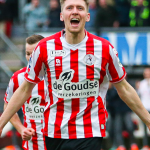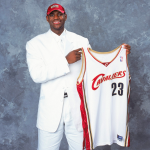
Why Sparta Rotterdam plays without shirts numbers
A choice dictated by tradition but also by marketing
January 30th, 2024
Each player has his own shirt number. This is a rule which, on paper, does not allow for any exceptions in professional football and which all clubs have followed. Not least because of the undisputed advantages it brings in terms of marketing, popularity and money. It is, in fact, a solution that primarily offers almost all players the opportunity to increase the value of their brand by tying themselves to a specific shirt number, which in many cases even survives a team change, which is becoming increasingly common in today's football. The most obvious example in this regard is Cristiano Ronaldo and the number 7 shirt, which, apart from a brief interlude at Real Madrid, he wore throughout his career, giving rise to the initials CR7. At the same time, assigning a number to each player on a team makes it possible to maximise revenue from shirt sales. After all, a player's popularity is also measured by how many shirts bearing his name he can sell. However, there is one European team that has decided to do things their own way by giving up in the name of tradition. It is Sparta Rotterdam.
The Dutch team is actually the only one among the top European leagues that does not have fixed numbers and plays every game with the classic numbering from 1 to 11. The distribution of jersey numbers also follows the old logic, according to which each position is assigned a specific jersey number, as is still the case in rugby today. For example, the right-back wears 2, the midfield plays 6 and 8 and the left wing wears 11. The decision to no longer assign fixed numbers to the players was taken by the club in 2010 after relegation to the second division, while it was Alex Pastoor, Sparta's coach from 2015 to 2017, who raised the bar and distributed the shirt numbers to the starting eleven according to the numbering manuals. There are no fixed numbers for the bench players either, but in this case there is a bit more freedom as there are no rules in this regard, for example which number strikers or midfielders who start a game from the bench must wear. To make it easier to distribute the numbers, the club has also decided to omit the names so that the logos of two back sponsors appear on the back of the jersey. This means that last-minute changes to the line-up can be made without too much drama.
A romantic decision, of course, to preserve the tradition of the oldest professional club in the Netherlands, which was founded in 1888 by eight students and cricketers. The value of Sparta Rotterdam's kit, from the traditional home jersey with the red and white vertical stripes that the club's management adopted in 1899 after a trip to Sunderland, to all versions of the away jersey and the third kit that Sparta have worn since 2010, remains one of the club's key assets. At the same time, however, it can also be interpreted as a precise marketing decision that is probably the best possible solution to generate publicity and attention for a team that would otherwise be overshadowed by the biggest teams in Dutch football such as Ajax, PSV and Feyenoord. Defending tradition is also the most logical choice for a team that prides itself on playing in a castle. And that's not just a figure of speech: Sparta's home stadium is popularly known as Het Kasteel, which means 'the castle' in Dutch, due to its original construction, which retains a two-tower building within the current outer structure.












